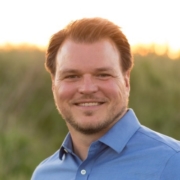Today we talk about the complexities of private higher education worldwide and how some private universities and colleges responded to and have been impacted by the coronavirus.
My guest is Daniel Levy, a professor at the University at Albany, State University of New York. He’s recently co-written a report entitled: “How Covid-19 puts private higher education at especially high risk – and not: early observations plus propositions for ongoing global exploration.
Citation: Levy, Daniel, interview with Will Brehm, FreshEd, 211, podcast audio, August 24, 2020. https://freshedpodcast.com/daniellevy/
Will Brehm 2:19
Daniel Levy, welcome to FreshEd.
Daniel Levy 2:21
It is good to be here. Thank you.
Will Brehm 2:23
Can you give me just the sort of general shape and size of the private higher education sector today?
Daniel Levy 2:30
Yes. And I think that it might surprise many that the size is about a third of all higher education enrollment in the world. So, that might translate very roughly to 70 million students.
Will Brehm 2:51
Wow! That is enormous.
Daniel Levy 2:53
Yes. I think it might come as a particular surprise to Europeans and others in the developed world because the concentration is more in the developing world.
Will Brehm 3:10
So, in what parts of the developing world, do we see private higher education sort of more pronounced than, say public higher education?
Daniel Levy 3:17
Yes. And when we say more pronounced, we are talking about strictly in enrollment terms. We have many systems in which private higher education may have even a majority of the enrollment and yet by non-enrollment indicators of importance, the public sector would still be weightier, if we could say. Yes, for example, and we could in the course of this interview 100 times say, “except for the United States”, but this will be the first: except for the United States, it’s rather rare for major research to be done in private colleges and even what I call private universities. So, that is one example of weight related would be, which sector -private or public- has most of the prestigious professors, and most of the students who are going to graduate into influential positions.
Will Brehm 4:28
So, an example -I am just thinking of the context that I know well- Cambodia, so they have the Royal University of Phnom Penh, which is a public university, prestigious, well known professors, does research. And then there are universities like Paññāsāstra University, which is a well-known private university, but is much more focused on the teaching. And so that’s sort of what you are describing, in a sense.
Daniel Levy 4:55
It is a perfect example. And it is an example that reinforces my confidence in the basic, private-public dynamic in higher education outside the United States because it’s something like what you’ve described is something I was researching in Latin America decades ago, when you would not have had private higher education in a country like Cambodia. And yet, as more and more regions of the world and more and more countries within the regions have allowed private higher education, the private higher education has tended to follow the patterns that we’ve seen in countries that previously had private higher education other than the United States. So, that suggests that there are reasons, that there are underlying dynamics of why it’s pretty rare for even what we would call loosely, a good private universities such as you cite, in Cambodia, it would be good in teaching. It would be good for students; it would still usually not be doing research.
Will Brehm 6:24
Is this phenomenon of private higher education relatively new? Like what, historically has it always been about a third of the higher education sector or has it increased in the last few decades?
Daniel Levy 6:40
It is certainly closer to the latter. Historically, if we went back to, say 1950, we would see outside the United States, private higher education would be rather spotty. A number of countries in Asia would have already had private higher education. Private higher education that existed was often religious. That is the case in Europe as well. And the origins there would be largely that higher education, which may have -even for centuries- rather fused, public and private. With the triumph of classic liberalism in the 19th century, universities became basically public. And that left the more religiously oriented families feeling out of the picture. So, this captures Europe and Latin America, for example. And they often took a second-best alternative. The best, leading, established universities were going to be public but they wanted some presence of their own and governments often accommodated them by allowing what was generally a Catholic sector, which was thought of more as Catholic than as private per se but it was private. So, other than the United States, which has a continuous existence of private -really from its colonial days but definitely from the beginning of its independent days- strong, really private sector. Other than that, the beginning of massive contemporary private higher education that would eventually cover the world is located largely in Latin America. It is totally fortuitous that my own background and training in political science had me specialized in Latin America. And in studying Latin American higher education, private hit me, I was not looking for it. I had not known it was there. But I saw the private there and it was, indeed, Latin America that was the first developing region to see private higher education spread by the middle of the 20th century to spread like wildfire to where it reached every country, except the one you would guess -Cuba. But now, the phenomenon is so worldwide that we are hard put, count even 10 countries out of 180 that have no private higher education. So, Cuba is one, but even other communist countries are not included in the 10. And that is an example of how far private higher education has come. That you would see it, not only in the post-communist countries of Eastern Europe and Central Asia, but that you would see it in countries that still call themselves communists like Vietnam and China. They have significant private sectors. China’s gigantic just by the total volume of higher education but private higher education has become ubiquitous. So that there are very few countries that do not have both public and private depending upon how you identify the regions of the world, every region has significant private higher education.
Will Brehm 10:48
So, it is interesting that you know when we think of the word private, it obviously encompasses many different types of higher education, as you said, religious being one. So, I guess one of the questions I have then is when did the idea of “for-profit” higher education emerge because that seems like a relatively new phenomenon.
Daniel Levy 11:07
It is a relatively new phenomenon. It has precursors, on the very borders of higher education so that, for example, if we go back to colonial times in Africa, there were correspondence courses that conferred certain kinds of diplomas and certificates. Were they higher education, were they post-secondary? They were often post-secondary, but if you had a strict definition of higher or tertiary, you might not include them. But some of these were clearly, legally for-profit operations. In the United States, for-profit does have origins from very early on, alongside non-profit, private, and non-profit private is largely religious. But as private higher education began to spread in most regions, again, looking at Latin America as a kind of paradigm, it was the jumping off point. In terms of ideology, and norms about what education in general should be, the dominant feeling, at least outside the United States remains to this very day that education is, or at least ought to be, preferably a public function, not a private function. So, when private higher education is allowed in country after country, it is usually allowed with a “but”, or a qualification, political arrangements are made. You can have private higher education, but it cannot do the following things. In many African countries, for example, you can open a private college, but you cannot call it a private university. University is something reserved for public. And sometimes that’s just nomenclature, and a matter of prestige and pride but sometimes it involves substantive restrictions on what can be offered to students, or done in matters of service, or even applied research. So, for-profit was a step too far in most cases. When private higher education was allowed in Latin America, in no country was for-profit allowed. So, in some cases, the law was silent, and the understanding was that private would have to be non-profit. This allowed considerable room for blurry borders and private institutions have been very adept at making money while being not legally for profit. Now in fairness, especially in recent decades, we could argue that many public universities, including in the developed world, have become very adept at making money. They have been very adept at including for profit actors -for dormitories, for food services, for lots of contracting out- in fact, they’ve been pushed by governments to do this because governments don’t want to bear the full costs. So, public universities have become -if you’ll forgive the use of the term- partially privatized, and even though they don’t meet the technical definition of for profit, which involves having share owners who invest and take money out of the institution -that would be clearly for profit, again, allowed in the United States, but until recently not allowed in many other places. Even without formally extracting profit, they still generate them. And you could be paying your brother in-law, well maybe not your brother in-law, but you could be paying your brother or a friend a ridiculously high salary to give advice to the college or university. And yet, by the law, technically, it would not be a violation. So, you could still be a nonprofit. Now, because of this, because of all the legal loopholes allowed, some countries did decide, well, if there is going to be de facto for profit, what we often call “for profits in disguise”. They were really operating like for profits, but they wore the title of nonprofit and reaped tax advantages accordingly. So, in the 1990s, independently, both Brazil and Peru decided, if we have this de facto for profit, let’s concede to reality. Let’s allow for profit but make it clear that existing institutions and future private institutions have to choose: either they’ll be truly nonprofit without the nonsense, or they can declare themselves for profit and operate in many ways, like any other business, even under business law, but they will pay taxes. That is a big difference. In fact, for profits, to avoid the pejorative connotations of the term for profit in most of the world, including even the United States for profits often like to call themselves not for profits, but tax paying institutions. So, what they are doing is that they’re spitting on the nonprofits and even the public institutions, which they think are really making money and doing pretty much the same things but it getting away with not paying taxes.
Will Brehm 17:04
How complicated. But it is interesting because it seems as if, you know, if we see it as a dichotomy between private and public, in fact, it’s sort of more of a continuum. And we see a lot of private and a lot of public in all types of universities and colleges, it seems.
Daniel Levy 17:24
Absolutely! And I would say that, on the one hand, one major criticism of my kind of research and looking at private and comparing it with public starts with that observation. Well, you know, it is a blur. And my response is that I start with the legal designation of the institutions: they are legally private; they are legally public. And then we start the real exploration. Well, just how private is a private institution? And many of the private institutions have quite a bit of publicness. They come under government regulations. Some of them even get some public money. This is interesting: they very rarely get money in the same way or to the same degree that the public colleges and universities do. So, my response is that, in fact, when you add up all the evidence we have from all the country, legally private institutions are much more private than legally public institutions. Even though that depends on country, even though there is blurring. There is particularly blurring over time. So, the United States with the oldest private sector has a tremendous amount of public money coming in, but I will just take the example of the national money. The United States uniquely did not have much of a national government role in higher education until Cold War era. And then when the national government would start funding the private sector, it wanted to clearly protect against the interface being the same as in the public sector. So, the national government does not basically give annual subsidies to private colleges and university. It gives money in two fundamental ways. It gives money to students directly. These are really vouchers. And then the student chooses the institution, private or public. And the national government does not care whether the institution is private or public. And the other way is research. You put in a research proposal, it is supposed to be judged on its merit blind to whether it comes from a professor in a private or a public university. But although that amounts to a lot of money in the United States, the flow of the money is still different. And you do not have the direct subsidization dependence relationship that you have with public institutions. But in most countries, so you can take Cambodia, 19 out of 20 republics in Latin America, private-public distinction is in fact a lot clearer. It is a lot more decisive than it is in the United States. So, the typical private higher education institution gets all or most of its money from tuition and fees. It cannot generate other money. It does not get money from alumni. It does not get money from business. It does not get money from philanthropy. It does not do contract research. So, it has a very thin, narrow revenue profile, completely private, it does not get anything from government. That is a rather typical situation. When we move to the better known of the private universities, we are more likely to see funds generated from business, from alumni who have done well, and even in indirect funding from particular government agencies.
Will Brehm 21:26
It is interesting. I mean, obviously, bringing up this issue of funding and the heavy reliance, but not maybe the total reliance on student fees in many countries when it comes to private higher education. It brings up the issue of the Coronavirus and you know we are recording basically mid-August of 2020. Many universities are preparing to start soon the next academic year. So, you know it makes me wonder: what has happened to private universities? What sort of impact has Coronavirus had on private universities and maybe in particular on some of their funding sources that they might be expecting from student fees?
Daniel Levy 22:09
Let me start with one very specific point because it connects to the very last point that we were discussing in the non-Corona context, and that is tuition. So, the most vulnerable institutions in general in the first higher education encounter with Corona, which is in many countries the last semester and likely will be carried forth into this coming semester is related to tuition. Where families get hit financially by the Corona crisis, the most vulnerable kind of institution is, what I would say, is the most common kind of private institution tuition dependent. If families lose income, they often cannot pay the tuition. This is particularly the case with the tuition dependent institutions because they tend to be the lower status institutions with the less well-off of the higher education population. Other private institutions, and even many public institutions tend to have students from economically better off families. They too will be suffering financially under Corona, but they are less likely to be disabled financially by them.
Will Brehm 23:43
Do you think there will be an increase in, you know, like student debt? Like more countries where students end up borrowing money to go to university?
Daniel Levy 23:52
That is a fascinating question. And I would have to say that there we are more in the realm of speculation than evidence. We could see already in regard to your prior question about tuition that institutions that were tuition dependent were immediately hit hard.
Will Brehm 24:11
Of course, at this point.
Daniel Levy 24:12
As far as the relief that may come, we got just glimpses in the last semester. So, for example, better off private university, even what I call semi-elite one do not do a lot of research but have very well-prepared students and faculty. Like Waseda University in Japan. They made a decision, at least in the last semester, not to cut the tuition but to provide relief to needy family. The typical private institution could not dream of doing such a thing. It does not have the means to do it. And so those are and this we established in work in the last decade pre-Corona. If you get a downturn in the total demand for higher education, the institutions that are hit the hardest are the weak, tuition dependent private institution. But there we engage something that you and I was speaking with before the interview, in that, you speculate that for all the evils of the Corona crisis, aggregate higher education enrollment may not turn out to be one of the casualty. And I think that that has a crucial private-public dimension because if total demand does shrink, these tuition dependent private institutions will be the most likely to fall or to merge with others. But if demand holds up, or even increases, even some of these demand absorbing, we have called them, institutions. They may not know very much about how to teach well, they know nothing about research, but they do know a thing or two often about marketing. And It is quite possible that some of them -they are not as encumbered by government regulations. They are not nearly as encumbered by faculty. Faculty, I can give eyewitness, can be major encumbrances, if you are trying to maximize entrepreneurial agility in a fast-changing job market. Let’s suppose that you are right, Will, and aggregate demand increases. Well, as you also said before the interview, it is likely to be a demand with a different shape to it. Who’s going to respond fastest to that, and even help manufacture demand, not leave it to the potential consumer to figure out that higher education may be a rational thing to do at this point, but to sell them the idea -more advertising. Now, I think the biggest, most natural beneficiaries of this generalizing will tend to be private more than public in many countries because they have more professional management, in fact, business management, in fact, sometimes from their business ownership. So, a changing marketplace is their game. Most of the weak, tuition dependent institutions have some advantages in agility, but they are still pretty small operations. In many cases, they are family operations without very skilled professional management. They may be sort of market savvy, but they do not have MBA degrees. But when you get to the more prestigious private institutions that have been very locked into the job market, as basically what they do in their teaching, and they’re not locked into the research world, but they’re locked into the world of employment. And they have professional management, they may fare particularly well. So, if I could just put two principle facts that your questions have led to together: the principal danger for the private more than the public lies in their tuition dependence, where they have it. And if there is any slide in ability to afford higher education, which in all countries private does charge, and in most countries there are not well-developed loan programs. So, the big danger with a lower tier private institutions is from the Corona financial impact is that students simply won’t be able to pay. And if they are unemployed, they don’t have a job. So, they may want to go to higher education, but they won’t be able to afford the tuition. That is the biggest danger for the private sector. But the largest advantage that we already see the beginning of in our report, and which could be an advantage going forward, lies in the professional, managerial agility, particularly of the more substantial private universities to deal quickly with changing conditions where public universities with the same degree of intelligence, and the same desire for enrollment may not be as able to deal with the situation.
Will Brehm 29:51
You know, it is interesting -the two sort of insights that you share there. I recently started a position at UCL just before Coronavirus, and before that I was at Waseda in Japan. And so, I more or less got to see how a top-tier private university in Japan responded to Coronavirus by reading about it online. And it was instant! As you said, they provided relief to students in need. They also gave out laptops and cell phones, and you know internet devices so students can connect to their zoom classes, and it was so, so fast. Whereas UCL has been much slower and in many ways, much more dependent on government advice and guidance, which was changing and slow. And so, it is a really fascinating experience to live through, you know, for two very different universities, two very good universities, but in a sense two very different responses to the Coronavirus.
Daniel Levy 30:54
I think that as the broadest generalization as broad as it is, I think valid. What we see so far with the Corona crisis is that the private-public similarities and differences in responses, and in impacts, flows logically from the underlying private-public configurations. And so, you see this great hesitation in the public sector. And you see it even in the UK. And there I would say, I see your comment, and I double it. Because one of the other variables is that you have countries like the UK and Australia and New Zealand, where the public sector though it may seem slow compared to the private is a whole lot less bureaucratic than it is in most of the world and even in most of Europe. The continental European tradition was much more national government centered with much less autonomy to the institutions to make some of their own decisions. So, the sort of government dependence, which has slowed things in country after country in the public sector -probably the problems that public sector would face in the UK would be problems that many public sectors in the world would wish for, compared to what they have to deal with. I mean, the Ethiopian government can make whatever decision it wants. And the next week, it could change that decision. And universities have to conform -public universities in particular. In more democratic, open settings as in the United States, you get a tug, you get the political struggles over what should be done and one side gets the upper hand, the policies go in one direction, the other side gets the upper hand they go in the other. Whereas a university like Waseda does have some buffer from that. On the one hand, it does not have to wait for government. On the other hand, it does not have to widely, slowly consult its faculty and its student. In lots of Latin America, in Europe, you have more of a co-government situation at the institutional level where the top decision-making body is a university council. It is not composed of professional managers. It is composed some of the amateur administrators, the faculty, student representatives, and even representatives of the worker. They have to deliberate much harder, so they are going to be slower. And that governance arrangement that I just mentioned is something that originated in the public sector and is still much more common there than it is in the private sector.
Will Brehm 34:01
I should add, Waseda University president is elected among faculty members and is a faculty member. So, it is not a sort of managerial class like you might find that you know in the UK, for instance. It does not have -I mean, I do not actually know about if it has a council or not like some of the Latin American countries.
Daniel Levy 34:21
There are a number of private universities -particularly the better one- that in order to attract better faculty have had to yield some on the strong managerial hand from above. What often happens is that the faculty themselves are somewhat different. So, I first saw this in a good, semi-elite university in Peru, private, called the University of Lima. I was astonished when I saw that over time, it is one highly centralized university just run by the bosses on top. How to form of co-governance? And how could this possibly be? The whole logic of the institution is a top down, we know what we are doing, we make efficient decisions. And the answer was partly, you know the kind of faculty and the kind of students who come here are not the kind who go to the National University at San Marcos much more left-oriented, much more radical in their politics, much less deferential. So, again, what we point to is a blurring of otherwise strong private-public distinctions. Even some of the more mundane tuition dependent private institution, on average, had an advantage over the entirety of the public sector when it came to switching to online and this became sharpest when you moved away from the very bottom of the private and you went to the ones that were tied into the job market. They had already introduced online modality to significant degrees in the decade before Corona. So, Argentina is a striking example. The private institutions, even the quite mediocre one, always on the lookout for enrollment, introduced online modalities and had a significant percentage of their enrollment online, and they had infrastructure, and they had faculty accustomed to teaching online, and they had students accustomed to taking courses. The largest and most important university in Argentina, the National University, University of Buenos Aires, had no online presence whatsoever. Why? Because the faculty, not without reason, thought that online was an inferior form of teaching. It is a valid critique but where the power lay in the University of Buenos Aires, it meant no online presence. So, to introduce any online in the University of Buenos Aires, partly even in the midst of the crisis has proven a battle and no doubt many students from the University of Buenos Aires will shift to private alternatives where they can afford it in order to be able to continue their higher education. So, the online is the most vivid example of the major general private advantage that may exist over public, which is quickness.
Will Brehm 37:27
It is a really fascinating report because it is sort of early evidence of what is happening in private higher education because of the Coronavirus, how universities respond, how there is differences in the private universities, the governance structures, it is such a complicated and complex phenomenon that is taking place. So, you know, I just want to say thank you for finding some empirical evidence in the beginning. I am sure there is a lot more work to do as the crisis unfolds in the months and years to come. Daniel Levy, thank you so much for joining FreshEd and I really appreciated our conversation today.
Daniel Levy 38:02
Thank you very much, Will. It has been quite edifying for me, and it is a tough subject to talk about when we get to COVID. But something we have to deal with, and the private-public dimension is an important part of the higher education reality.
Will Brehm 38:17
Well, thank you for starting the conversation on it.
Want to help translate this show? Please contact info@freshedpodcast.com
Related Author Projects
How covid-19 puts private higher education at especially high risk
Global private higher education: An empirical profile of its size and geographical shape
The decline of private higher education
The global growth of private higher education
For-profit versus nonprofit private higher education
Public policy for private higher education: A global analysis
Related Resources
Higher education in Latin America and the challenges of the 21st century
The impact of COVID-19 on the private higher education system and students in Oman
Enduring the impacts of COVID-19: Experiences of the private higher education sector in Ethiopia
The impact of Covid-19 on higher education around the world
A new dynamic: Private higher education
How COVID-19 affects higher education financing in developing countries
Have any useful resources related to this show? Please send them to info@freshedpodcast.com









